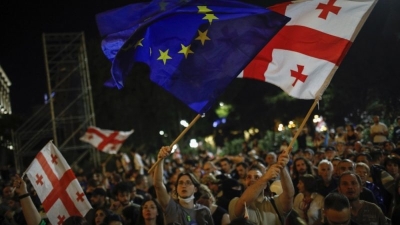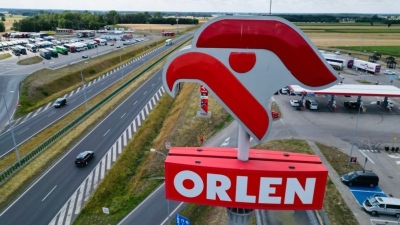The EU SEP Regulation: A Proportionate Step in the Right Direction

The proposed EU SEP Regulation is a form of “light-touch”, proportionate regulation to enhance transparency and predictability and offer non-binding expert opinions, that should, on balance, benefit EU industry and consumers.
Standards such as Wi-Fi, 5G, and narrowband IoT are key to technological progress, productivity and economic growth in key sectors of the economy from telecommunications to connected vehicles, from smart appliances to innovative medical applications. A technology underpinning standard may read across hundreds or thousands of patents. Standard developing organisations (“SDOs”) generally require the owner of patented technologies that are essential to a standard to commit to license the standard-essential patent (“SEP”) on fair, reasonable, and non-discriminatory (“FRAND”) terms. The reason is obvious: once a standard is adopted, the entire industry is locked into the standard. Without effective safeguards, SEP owners can extract excessively high royalties that limit the availability of the standard to the detriment of other industry players and consumers. A decade ago, in Motorola, the European Commission decided that it was an abuse of dominance for Motorola to seek and enforce an injunction against Apple before the German courts, when Apple had communicated its willingness to enter into a FRAND licence. At the same time, in Huawei v ZTE, the Court of Justice ruled that a SEP owner abuses its dominant position by bringing a claim for an injunction if it does not comply with certain pre-litigation steps unless the prospective licensee shows itself, by its conduct, to be unwilling to take a FRAND licence.
On 21 February 2024, these issues were discussed with judges, experts and industry representatives from all sides of the debate. There was a clear view that the current application of Huawei v ZTE and, more generally, the existing legal framework fail to deliver balanced and efficient market outcomes, not least because the case was only even about behaviour, rather than FRAND rates and FRAND terms.
EU courts have generally refrained from setting FRAND terms and the post-Huawei litigation has mainly focused on injunctions and on the behaviour of SEP owners and prospective licensees in what has been described as the “FRAND dance”. A crucial missing element in this approach is what the FRAND rate actually is: injunctions are often issued by courts in the EU without a proper FRAND determination although the level of the FRAND royalty is typically at the heart of SEP disputes. The risk of market exclusion that would result from an injunction being granted, may force a licensee to accept higher-than-FRAND royalties, which was the issue in the Motorola case. By contrast, US courts (if requested by the parties), and English and Chinese courts do set the terms of global FRAND licences. This is not without its problems from an EU perspective. EU-wide FRAND terms are set by non-EU courts. Prospective licensees that have the resources and ability to resort to Chinese courts may benefit from the lower global rates set in that jurisdiction but many EU companies, particularly SMEs, may not be active in China and may simply not have that option.
What the market needs is transparency and predictability over the FRAND royalties and other terms that will be applicable to a given standard. A more efficient and transparent SEP licensing environment would allow SEP owners to monetise their SEPs quickly and efficiently, avoiding protracted negotiations and litigation costs, with significant resources being diverted from R&D efforts to unproductive, socially wasteful activities. It would also stimulate investments into downstream innovation by prospective licensees and facilitate the development of standard-compliant products.
Currently, there appears to be a gap in the market where there is an acute need for enhanced disclosure of information on SEPs and the maximum aggregate royalty burden relating to a given standard. There is also an acute need for a facilitative FRAND conciliation procedure, in line with established ADR practices that have been used in the commercial field for decades, that would reduce the likelihood of litigation and, if litigation is in fact unavoidable, would help the parties and the courts focus on the key issues and speed the process up. These problems affect, in principle, all prospective licensees and the market as a whole, but may be particularly acute for SMEs. The European Commission’s impact assessment addressed this point specifically, by conducting a thorough literature review, backed up by an empirical analysis of responses to the consultation by SMEs. The UK IPO’s own SME survey and recent findings by UK courts are consistent with the Commission’s conclusions about the problems of the current system.
The proposed SEP Regulation addresses these problems in a proportionate, reasonable and even, I would suggest, “light-touch” way. I do not question that the proposal may be subject to improvement by streamlining and clarifying its scope of application, registration requirements, essentiality checks, aggregate royalty determination and FRAND conciliation procedures. But the fundamental pillars of the reform are sound and much needed:
- The proposal fills a gap by providing for registration and information requirements relating to SEPs. These measures simply enhance market transparency and are fundamentally consistent with the idea that an effective licensing system must be predicated on information being available to all parties in a way which is, as much as possible, symmetrical and reliable.
- The proposal provides for a procedure for the determination of an aggregate FRAND royalty, if there is sufficient market demand. Such a determination is not binding. Its aim is simply to provide the parties and the market with a non-binding view on the aggregate FRAND royalty, which can be the focal point for further discussions and, possibly, agreement.
- The proposal also provides that, before either a SEP owner or a prospective licensee can start litigation, there shall be a period of up to 9 months during which the FRAND conciliation procedure will take place, which may result in the parties agreeing a FRAND licence or in a non-binding third-party expert opinion on FRAND terms. If the parties do not agree a licence, the ensuing litigation, in which the court is of course not bound by the opinion, is likely to benefit from the sharper focus and narrower set of issues that will have been scoped during in the conciliation procedure. A 9-month period is not unreasonable in this respect. The SEP owner, let us not forget, has committed to license its SEP on FRAND terms. This means that its only risk in a postponement of the litigation is purely financial. This is addressed in the proposal by giving the SEP owner the unfettered right to apply to a court for an injunction of a financial nature, for example requiring the prospective licensee to post a bond for any FRAND royalties that may be due. Currently, from reported cases, it seems that the “FRAND dance”, which is a pre-requisite for a SEP owner to apply to a court for an injunction, in practice takes much more than 9 months anyway.
In conclusion, the proposed EU SEP Regulation is a reasonable and proportionate step in the right direction. By all means, we should work to improve it. But we should not miss this important opportunity to provide for much needed predictability and transparency – including, crucially, on the total aggregate royalty burden and on individual FRAND rates – to European stakeholders in crucial sectors of our economy.



